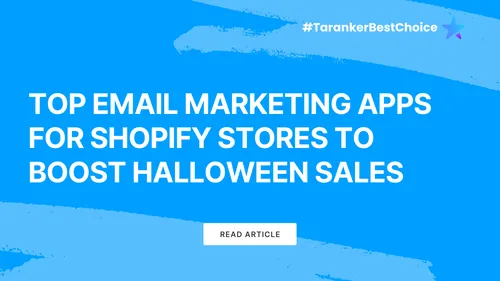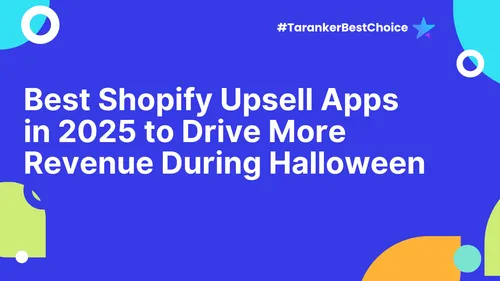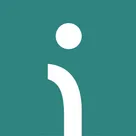In the fast-paced world of ecommerce, email marketing continues to be a powerful tool that delivers impressive results. With over 4 billion active email users worldwide and studies showing that for every $1 spent on email marketing, businesses can expect an average return of $42 (according to Litmus 2021), it’s clear that email remains one of the most effective methods of driving sales.
However, despite its effectiveness, the challenge remains: how do you create emails that not only stand out but also convert readers into loyal customers?
In this blog, we will walk you through the key strategies for using email marketing to boost sales in your Shopify store. From building and segmenting your email list, to writing compelling offers and automating your campaigns, we’ll provide actionable tips and strategies you can start using right away.

1. Building an Effective Email List
1.1. Why Your Email List is Your Greatest Asset
An engaged and growing email list is the foundation of any successful email marketing strategy. Without it, your efforts won’t yield significant results. Here’s how you can build an email list that will bring in consistent revenue:
-
Use Lead Magnets: A lead magnet is any free offering that incentivizes customers to share their email addresses. Examples include eBooks, discount codes, free trials, or access to exclusive content.
-
Optimize Sign-Up Forms: Make sure your sign-up forms are easy to find and easy to complete. Pop-up forms, sticky bars, or dedicated landing pages can significantly increase sign-ups. Offering a discount on the first purchase for subscribing is a great incentive.
-
Leverage Social Media: Promote your email sign-up form across your social media profiles. Platforms like Instagram and Facebook are great places to push people toward your email list, especially by offering exclusive deals to subscribers.
-
Incentivize Referrals: Offer existing subscribers a reward (like discounts or loyalty points) for referring others to sign up for your email list. Word-of-mouth is a powerful tool.
Actionable Tip: Use exit-intent popups to capture visitors who are about to leave your site. Offering a last-minute discount or exclusive content can help you turn these visitors into subscribers.
2. Email Segmentation: Sending the Right Message to the Right Audience
2.1. What Is Email Segmentation?
Segmentation is the process of dividing your email list into smaller, more specific groups based on shared characteristics or behaviors. By sending tailored content to each group, you increase the relevance of your messages, which in turn boosts engagement and conversions.
Types of Segmentation:
-
Behavior-Based Segmentation: Segment your email list based on past behaviors such as purchases, abandoned carts, or website visits. For example, send abandoned cart reminders to customers who have left items in their cart without purchasing.
-
Demographic Segmentation: Segment by factors like location, age, gender, or even past purchases. This allows you to craft personalized content that appeals to different customer needs.
-
Engagement-Based Segmentation: Group customers based on how often they open and click your emails. For example, you can target highly engaged customers with loyalty rewards or re-engage less active subscribers with a special offer.

2.2. How to Segment Your Email List Effectively
-
New Subscribers: Start with a welcome series that introduces your brand, sets expectations, and offers a special discount on their first purchase.
-
Frequent Buyers: Use VIP offers or exclusive content to show appreciation for their loyalty. These customers are likely to respond positively to personalized emails.
-
Abandoned Cart Users: Send personalized abandoned cart reminders with a sense of urgency (e.g., "Still thinking about it? Get 10% off if you buy now!").
Actionable Tip: Use email marketing platforms like Klaviyo, Mailchimp, or Omnisend to automate segmentation and create personalized campaigns.
3. Crafting Compelling Subject Lines
3.1. Why Subject Lines Matter
The subject line is the first thing your recipients see, and it determines whether your email gets opened. Studies show that 47% of people decide whether to open an email based solely on its subject line. If you don’t catch their attention, you’re already losing the battle.
3.2. Tips for Writing Effective Subject Lines
-
Create Urgency: Use time-sensitive words like “Last Chance”, “Today Only”, or “Limited Time Offer” to create urgency and motivate immediate action.
-
Personalize: Make the subject line relevant to the recipient by including their name or referencing something they’ve shown interest in. For instance, “[Name], Get 20% Off Your Favorite Item!”.
-
Keep it Concise: Subject lines should be between 40-60 characters so they don’t get cut off in mobile inboxes.
Actionable Tip: Regularly A/B test subject lines to see which resonates most with your audience. Test different tones (urgent, humorous, informational) and formats.

4. Crafting Compelling Offers in Your Emails
4.1. Writing Offers That Convert
The offer you present in your email is as important as the subject line. It must be clear, valuable, and actionable.
-
Create Urgency: Encourage customers to act fast with time-sensitive language like “Hurry! Limited time offer!”
-
Personalize the Offer: Based on their purchase history or browsing behavior, tailor the offer. E.g., “[Name], you’ll love this 10% off on your next purchase of shoes”.
-
Add Social Proof: Show testimonials, user-generated content, or reviews to back up your offer and build trust.
4.2. Types of Offers to Include
-
Discounts and Coupons: Offering a percentage or flat-rate discount encourages immediate sales.
-
Free Shipping: This is an extremely popular incentive that increases conversion rates.
-
Exclusive Access: Give your email subscribers early access to sales, product launches, or limited-time offers.
Actionable Tip: Use a strong call-to-action (CTA) in your offer, such as “Shop Now”, “Get Your Discount”, or “Claim Your Offer”, to guide the customer toward purchasing.
5. Email Automation for Ecommerce: Save Time and Boost Conversions
5.1. The Power of Automation
Automating your emails allows you to send relevant messages at the right time, without manual intervention. This can save you time and increase the likelihood of conversions. Some key automated emails include:
-
Welcome Series: Immediately engage new subscribers with a series of welcome emails.
-
Abandoned Cart Emails: Remind customers of the products they left behind, offering discounts or incentives to complete their purchase.
-
Post-Purchase Follow-ups: Encourage feedback, cross-sell complementary products, or offer loyalty discounts.
Actionable Tip: Use email marketing tools like Klaviyo, Mailchimp, or Omnisend to set up automated campaigns based on customer behavior.

6. Measuring Success: How to Track Your Email Marketing Performance
6.1. Key Metrics to Track
-
Open Rate: The percentage of recipients who opened your email.
-
Click-Through Rate (CTR): The percentage of people who clicked on links inside your email.
-
Conversion Rate: The percentage of recipients who completed a desired action, like making a purchase.
-
Bounce Rate: The percentage of emails that were not delivered.
6.2. Optimizing Campaigns Based on Data
-
A/B Testing: Test subject lines, offers, and email designs to optimize your campaigns.
-
List Hygiene: Regularly clean your list by removing inactive subscribers to ensure better deliverability and engagement.
Actionable Tip: Review your email campaign performance regularly. Identify trends and areas for improvement to ensure your emails continue to engage and convert.
7. Real-Life Example: Ecommerce Success with Email Marketing
7.1. Case Study: How a Shopify Store Increased Sales with Email Marketing
-
The Challenge: A fashion ecommerce store was struggling with cart abandonment and low customer retention.
-
The Solution: The store implemented automated welcome emails, abandoned cart reminders, and personalized offers based on customer behavior.
-
The Result: The store saw a 20% increase in revenue and a 15% boost in customer retention in just 6 months.
Actionable Takeaway: Automation and segmentation were key to driving sales and improving customer loyalty.
Conclusion:
Email marketing remains a cornerstone of ecommerce success. By building a high-quality email list, segmenting your audience, crafting compelling offers, and automating your campaigns, you can create a powerful email strategy that increases sales and customer loyalty.
The key to success in email marketing is continuous optimization. Regularly analyze your campaign performance, test new strategies, and refine your approach to ensure you’re always delivering value to your subscribers. With the right strategies in place, email marketing can become one of the most effective ways to grow your business and build long-term relationships with your customers.
Start today by applying these strategies, and watch your Shopify store thrive.













